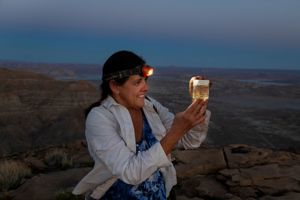CATALYST
DENVER MUSEUM OF NATURE & SCIENCE ONLINE MAGAZINE
Museum Scientists Discover a Complete Triceratops Skull
How a Team of Paleontologists, Fossil Preparators and Interns Came Together to Excavate One of the Largest Fossils the Museum Has Ever Collected
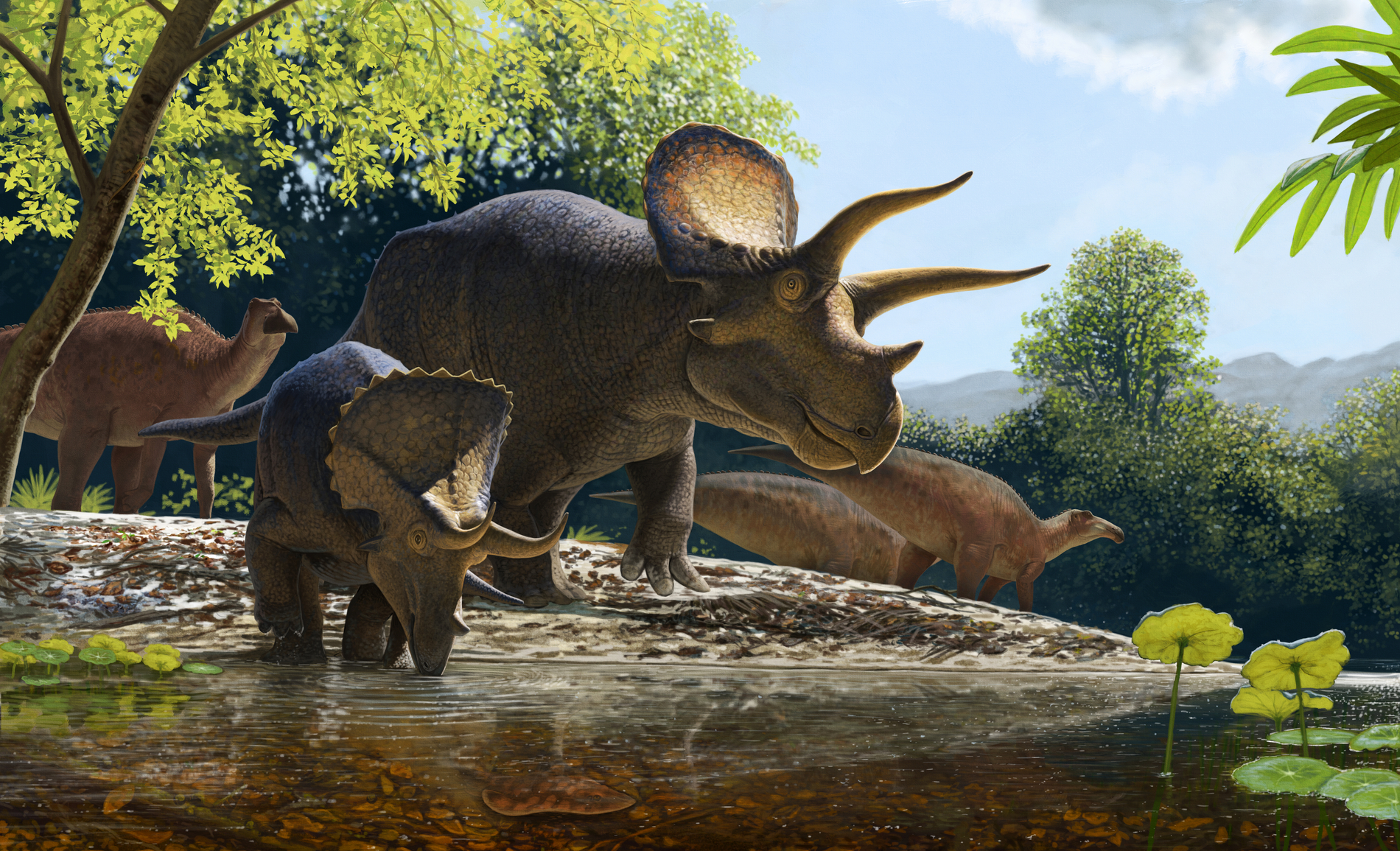
Environmental reconstruction of the latest Cretaceous showing an adult and juvenile Triceratops prorsus along the banks of a river with a herd of duckbilled Edmontosaurus annectens in the background. (Illustration/ Andrey Atuchin and Denver Museum of Nature & Science)
To a team of Denver Museum of Nature & Science paleontologists, fossil preparators and interns, the hillside of a desolate stretch of the Hell Creek badlands of North Dakota in the dead of summer felt like paradise. Awaiting them was a once-in-a-lifetime opportunity to excavate and collect a complete Triceratops skull, including the lower jaw, neck and a variety of vertebrae and rib bones.
Pieces of Triceratops skulls and shields are common in the area – scattered like bits of hard candy across the mottled terrain – however, finding a complete skull with lower jaws and an articulated neck is vanishingly rare. “You just don't have that many 100 percent complete skulls of any dinosaur, and this one is literally 100 percent complete,” said Dr. Tyler Lyson, senior curator of vertebrate paleontology, who led the expedition.
In a stroke of good fortune, this incredible find was located on public lands managed by the U.S.D.A. Forest Service, which agreed to partner with the Museum to collect the fossil.
Learn more about the discovery: Dreams Triceratops
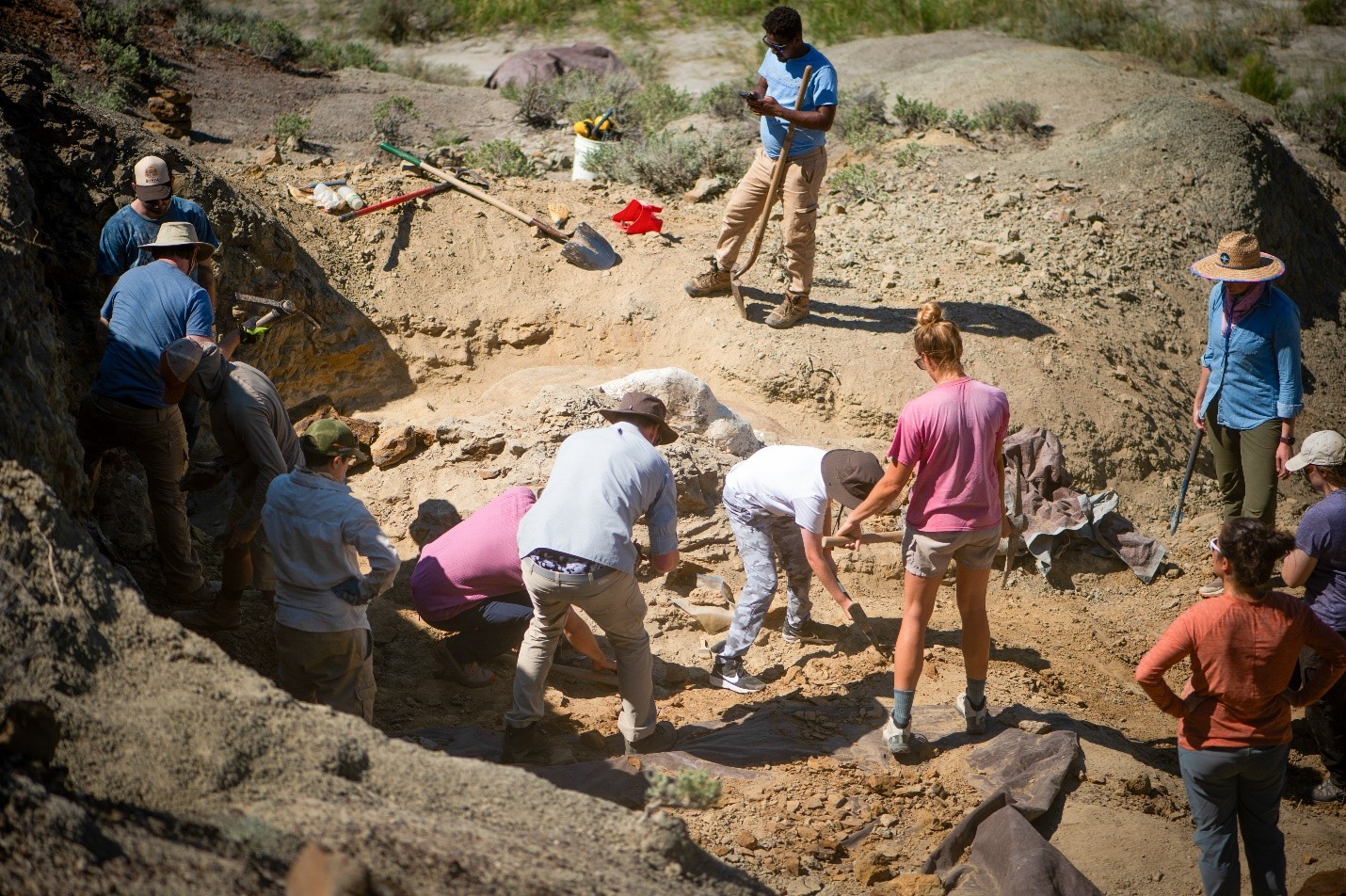
Triceratops dig site bustling with activity. (Photo/ Jordan Cooper)
Prying this year’s discovery from the earth and bringing it home would require not only brute force but also creative problem solving, an assortment of heavy-duty machinery, several modes of transportation and most importantly, teamwork.
Thankfully, over 50 interns, students and collaborators representing 21 colleges and four continents joined the dig this year. Interns provide the raw power, energy and grit as well as critical thinking skills that help bring large-scale excavation projects at the Museum to fruition. In fact, it was an intern who made the initial discovery during the 2024 field season.
“Interns and students are the engine that makes our field program and lab program tick. Every single step is powered by young people psyched about fossils,” Museum fossil preparator Salvador Bastien said.
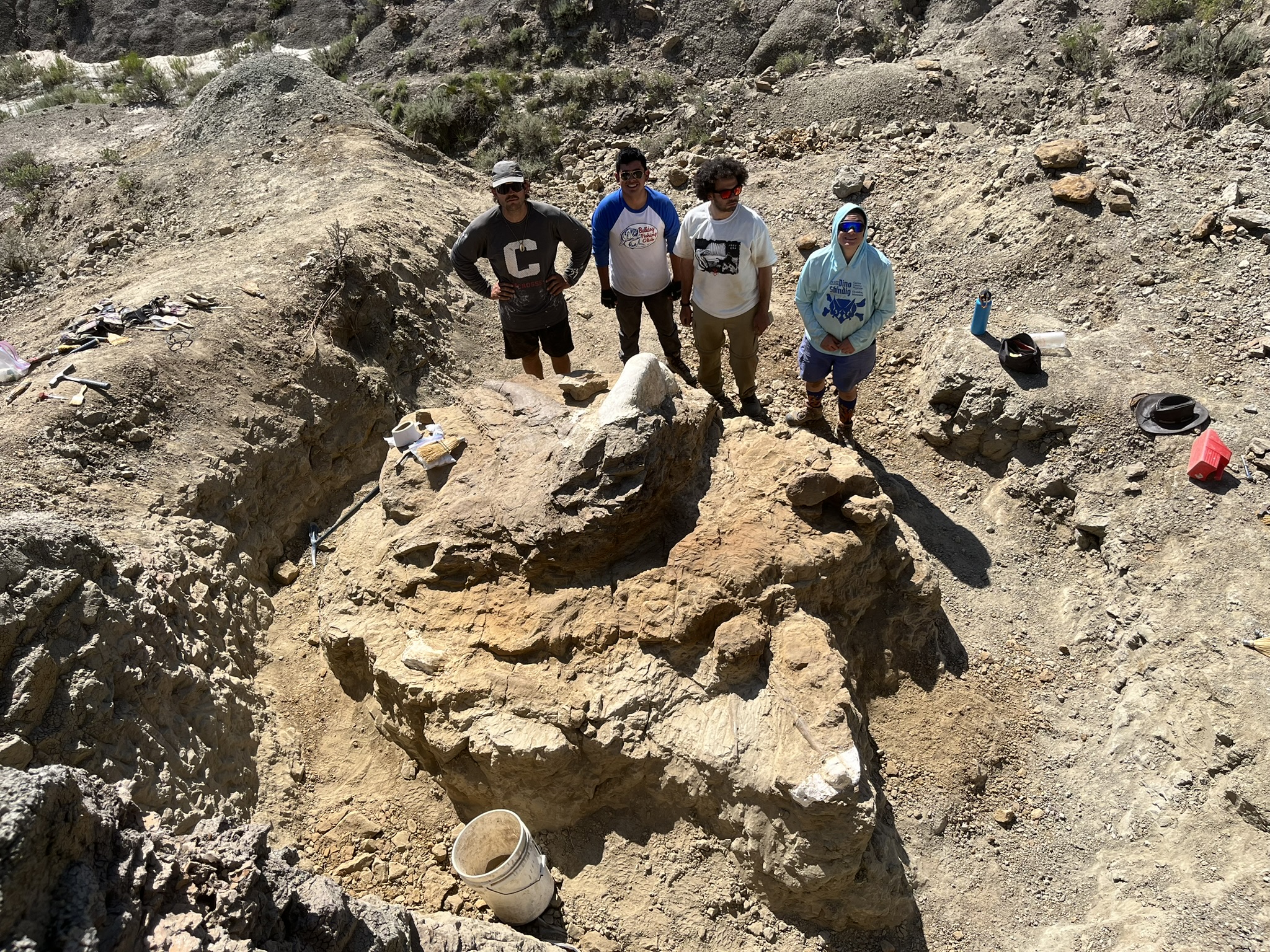
Left to right, Luke Kosowatz, Mario Gamarra, Belal Salem and Marisa Luft pose in front of the Triceratops fossil embedded in the ground. (DMNS Paleontology Team)
The dig site was dominated by an enthusiasm that only a team of young, eager fossil hunters can muster – a dozen or so interns at a time would claw the earth with shovels, pickaxes and rock hammers, dragging mounds of dirt piled atop a tarp unceremoniously over the edge and pausing periodically to do fine brush work or marvel at the latest discovery. They would pass the time by singing acapella, doing celebrity impressions and challenging each other to consume as many energy drinks as they could stomach.
The experience was not only memorable for the interns but could open doors into careers in paleontology and the sciences that never would have existed otherwise. “Being able to do field work as well as lab work and learn from amazing people at the Museum has really changed my focus on what I think I want to do and opened up more opportunities and possibilities of things I could do in future lives,” said intern Marisa Luft.
The excavation team, which was largely composed of interns, was charged with digging a Triceratops-sized hole – larger than an African elephant – out of the impossibly hard-packed sand that provides an ideal medium for preservation. Wielding a 70-pound jackhammer called “The Brute,” the team spent two days removing the overburden before beginning to use finer tools.
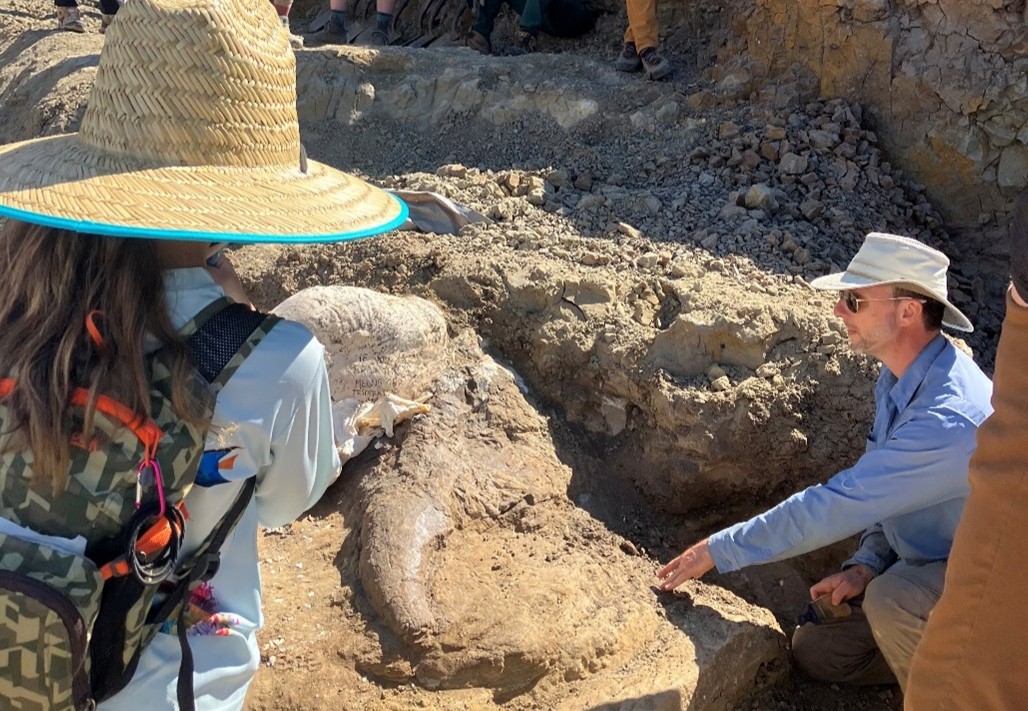
Dr. Tyler Lyson, bottom right, explaining the significance of the fossil. (Photo/ Jordan Cooper)
From there, they meticulously carved the giant slab out of the hillside, applied 1,500 pounds of plaster for protection and hoisted it onto a front-end loader. The field jacket enveloping the monstrous head and neck weighed in at 5.4 tons – one of the largest fossils the Museum has ever collected.
After a failed attempt at using railroad ties to secure the load to the trailer for transport, they enlisted a professional welder to weld it to I-beams for a sturdier base. “The jacket was snapping the railroad ties like they were toothpicks,” Dr. Lyson said.
Bastien, who had been working around the clock as crew chief to ensure the safe return of the fossil, encountered a new set of complications at every turn. “There's one logistical hurdle after another and one massive physical labor task that needs to be done after another. There are all these different moving parts, and you have to ditch your plan and make up a new plan constantly,” he said.
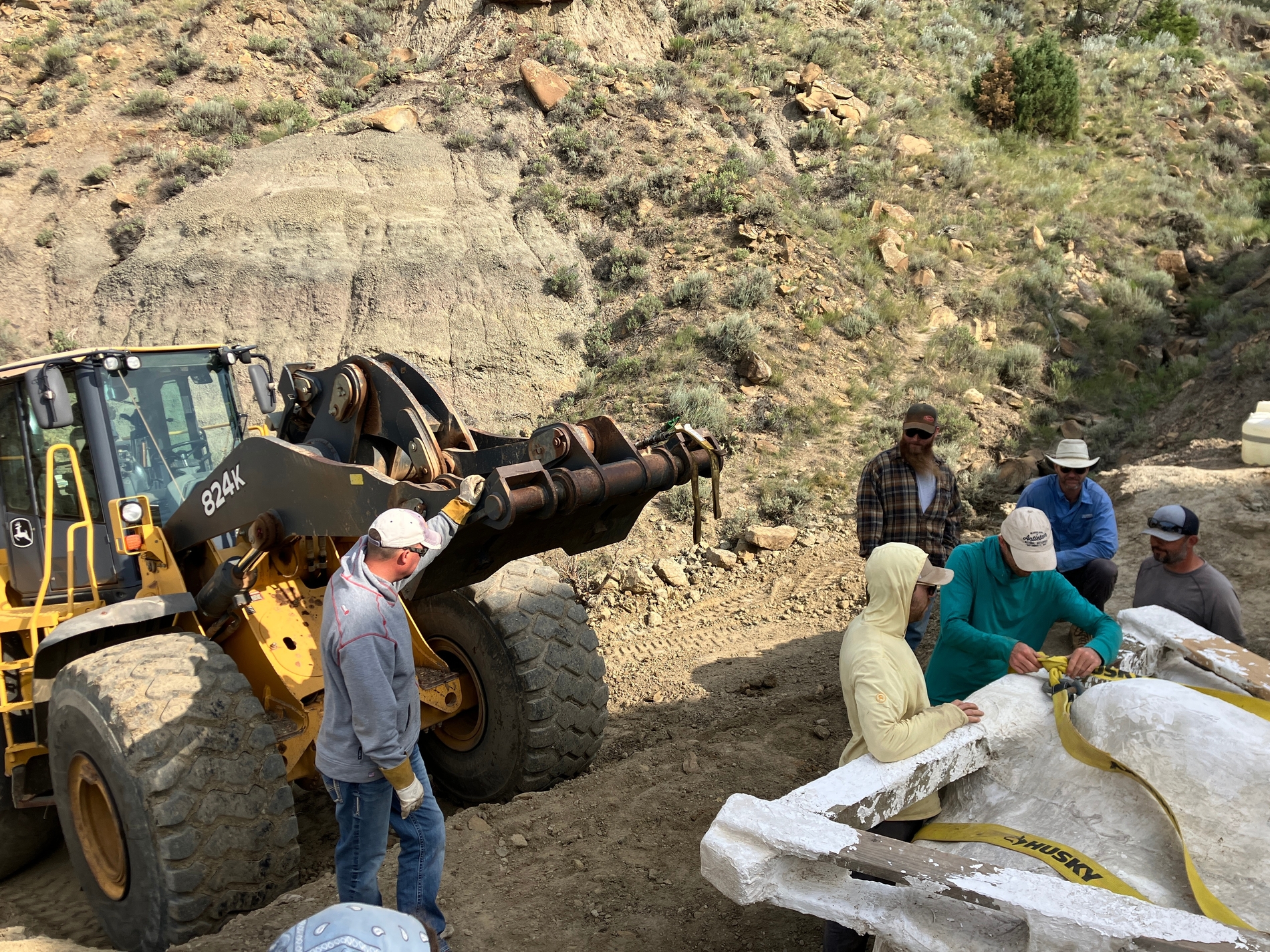
Paleontologists set up straps before flipping the jacket with a front-end loader. (Photo/ DMNS Paleontology Team)
Even once the specimen reached the Museum, the job was far from over. The excavation team and the building operations team partnered to determine whether the freight elevator and the oversize prep lab inside the Museum would be able to support the weight of the jacket. Ultimately, it was deemed necessary to remove large pieces of plaster and rock to accommodate the object’s extraordinary mass before being able to store it properly.
Now, the fossil is currently being cleaned and prepared for study in full public view inside the “Discovering Teen Rex” exhibition on the Museum’s first floor, across the hallway from “After the Asteroid.” Visitors can watch as paleontologists and fossil preparators work to uncover the specimen from its massive 5.4-ton rock jacket.
The Herculean effort that went into preparing and returning the fossil to the Museum will ultimately pay dividends through its contributions to the scientific community. Once the specimen has been digitized, paleontologists from around the world will be able to glean new insights into the life cycle and individual variation of the Triceratops species, among other findings.
“It's a logistical challenge all the way through, but the end result will be a world-class fossil, and that's why we do it,” Dr. Lyson said.
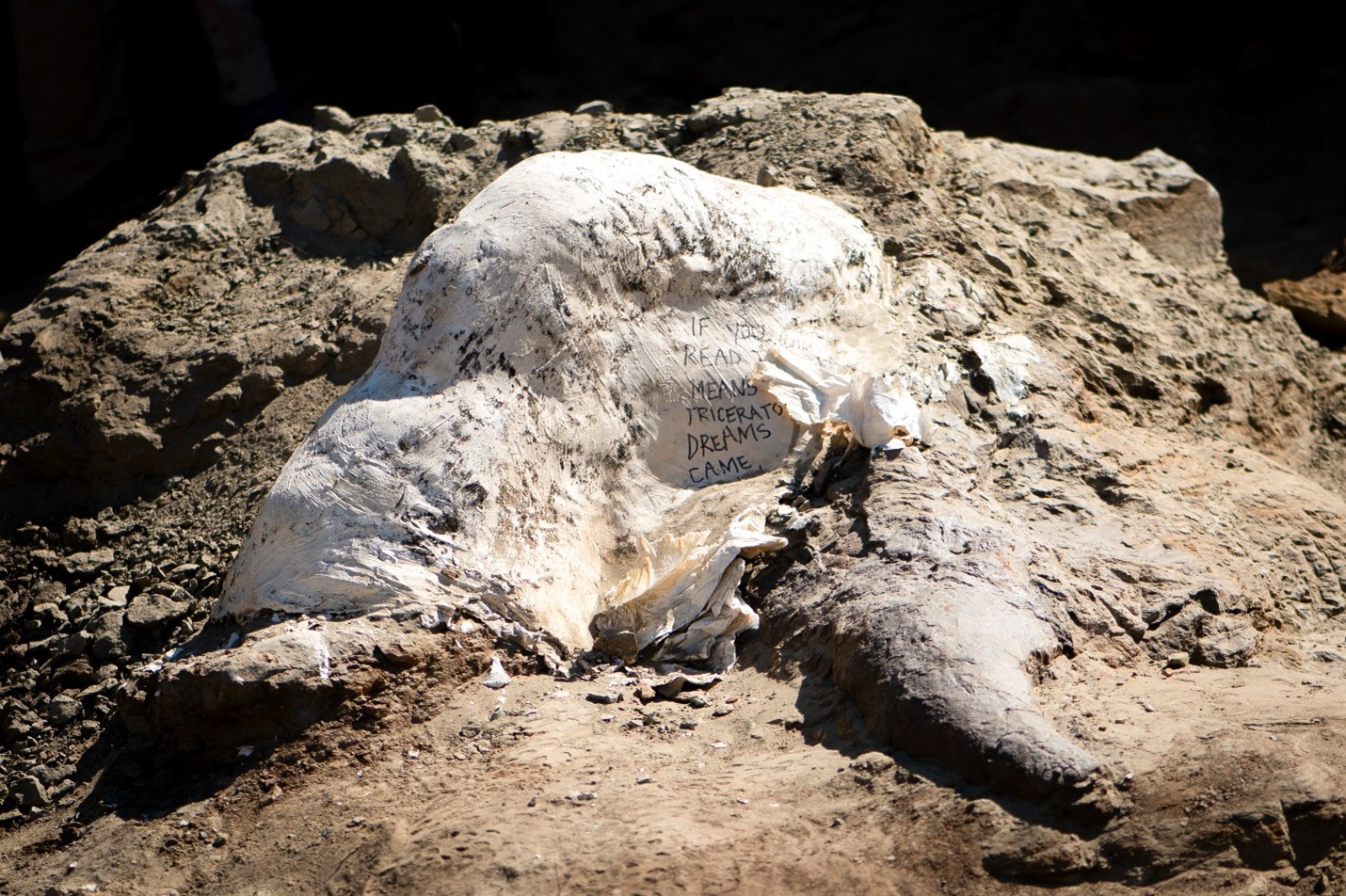
Close-up of the exposed horn and fossil jacket encasing the Triceratops' shield. Inscription reads: "If you can read this, it means our Triceratops dreams came true." (Photo/ Jordan Cooper)




